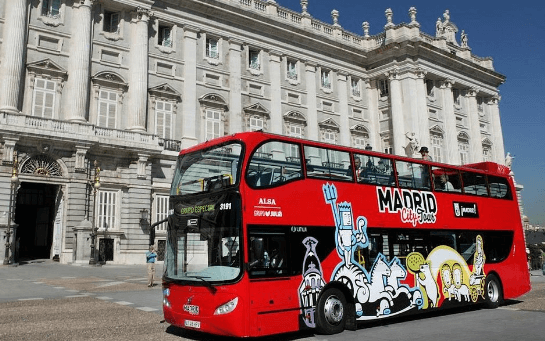The Patron Saint of Travel: Guardians on the Journey
In the realm of spirituality, one often seeks solace and protection in the form of a guardian or protector. The concept of patron saints has long been a source of comfort for many, offering guidance and safeguarding in various aspects of life. In this article, we will explore the role of patron saints, with a special focus on the patron saint of travel.
The Concept of Patron Saints
Patron saints are individuals recognized as special intercessors or protectors for specific groups of people, professions, or situations. They act as a bridge between the earthly realm and the divine, offering their blessings and guidance to those seeking assistance. Patron saints are revered and celebrated in various religions, each having their own set of patron saints for different purposes.
The Role of Patron Saints in Various Religions
While patron saints are most commonly associated with Christianity, they also exist in other religions. In Christianity, these saints are believed to have the power to intercede with God on behalf of the living. However, other religions also have similar figures or deities who play comparable roles.
Patron Saints of Travel in Christianity
Saint Christopher
Saint Christopher is one of the most famous patron saints of travel in Christianity. He is often depicted as a tall man carrying a child on his shoulder while wading through a river. According to legend, he was a Canaanite giant who sought the greatest ruler in the world to serve. He found a hermit who told him to serve Christ by helping travelers cross a dangerous river. Saint Christopher remains a beloved protector for travelers, offering safety on their journeys.
Saint Raphael
Saint Raphael is another patron saint travelers turn to for protection. In the Book of Tobit, he played a vital role in guiding Tobit’s son, Tobiah, on a perilous journey. Saint Raphael’s name means “God has healed,” and he is associated with healing and safe travel. He is often depicted holding a staff and a fish, which symbolize his role as a guide and protector.
Patron Saint of Travel in Other Religions
Hermes in Greek Mythology
In Greek mythology, Hermes, the messenger of the gods, served as a patron of travelers. Known for his speed and agility, Hermes guided souls to the afterlife and was seen as a protector on journeys.
Tara in Buddhism
Buddhism has its own equivalent in Tara, the female Bodhisattva of compassion and protection. She is often invoked by travelers for a safe and auspicious journey.
The Significance of Patron Saints of Travel
Patron saints of travel hold immense significance as they provide a sense of security and hope to travelers. Whether one is embarking on a long journey or a short commute, seeking the blessings of a patron saint can bring peace of mind and confidence.
How to Seek the Protection of Patron Saints
To seek the protection of patron saints of travel, individuals often carry tokens, medallions, or images of the respective saints. They may also recite specific prayers dedicated to these saints, asking for guidance and protection.
Stories and Legends
Saint Christopher and the Child Jesus
One of the most renowned stories associated with Saint Christopher tells of his encounter with a child who later revealed himself as Jesus. This story underscores the importance of helping others and the rewards of selflessness.
The Healing Powers of Saint Raphael
The Book of Tobit recounts how Saint Raphael guided Tobiah on a journey and healed Tobit’s blindness. This story reflects the saint’s role in both physical and spiritual healing.
Popular Traveler’s Prayers
Travelers often recite special prayers for safe journeys. A common prayer to Saint Christopher is, “Saint Christopher, protect me, and all those who travel in this car with me.” These prayers are a way to connect with the patron saints and seek their protection.
Modern Devotion to Patron Saints of Travel
In the modern age, devotion to patron saints of travel continues. Many travelers keep a medallion or image of their chosen patron saint in their vehicles or carry it with them during their journeys, seeking comfort and guidance.
Common Symbols and Icons
Symbols associated with patron saints of travel include staffs, children, fish, and river crossings. These symbols represent the specific attributes and stories associated with each saint. Read more…
Conclusion
Patron saint of travel play a vital role in providing comfort and protection to those on the move. Whether you follow the Christian faith or another religion, these revered figures offer a sense of security and guidance on your journeys. So, as you embark on your next adventure, consider seeking the protection of your chosen patron saint.
FAQs
1. Can I have more than one patron saint for travel?
Yes, some individuals choose to invoke the blessings of multiple patron saints for different aspects of their journeys.
2. How do I choose the right patron saint for my travels?
You can choose a patron saint based on your religious beliefs, personal connection, or the specific attributes of the saint.
3. Do patron saints guarantee a safe journey?
While they are believed to offer protection, taking necessary precautions and making responsible choices during your travels is essential.
4. Can people of all religions seek the protection of patron saints of travel?
Yes, seeking protection during travel transcends religious boundaries, and people of various faiths can turn to patron saints for guidance.
5. Is there a specific prayer to seek the protection of patron saints of travel?
There are various prayers associated with different patron saints. You can find prayers specific to your chosen patron saint and use them during your travels.
In conclusion, patron saints of travel serve as steadfast companions on our journeys, offering solace, guidance, and protection. Their stories and legends enrich our travels with a sense of the divine, reminding us that we are never alone on the road.







